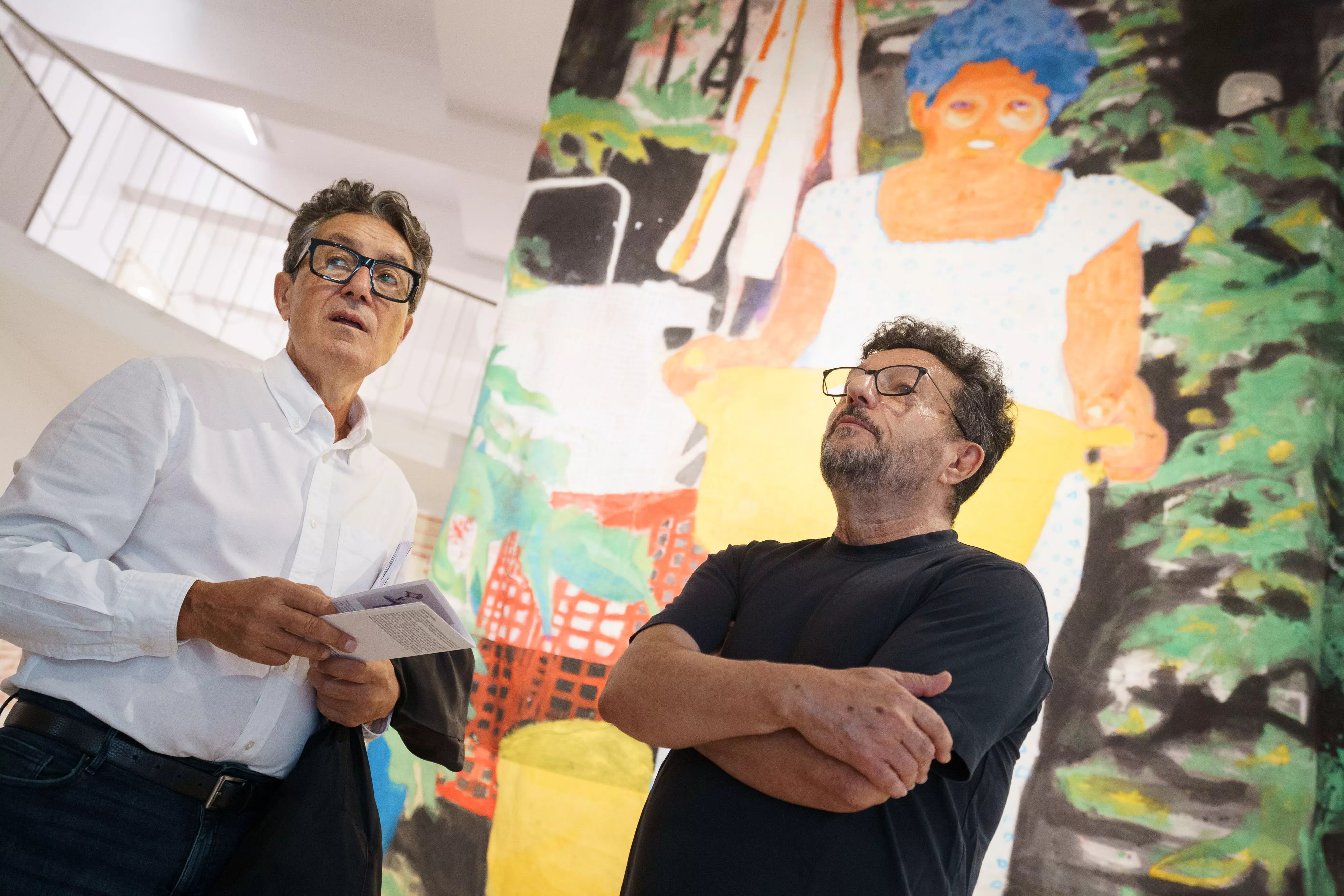Santa Cruz de Tenerife has always prided itself, and rightfully so, on being one of the major cities in Spain (for many, clearly the leading one) with more green spaces within its urban area (excluding the Anaga Rural Park). Treasures like García Sanabria, La Granja park, Plaza del Príncipe (and many others), the boulevards, and numerous other trees on streets, avenues, and public areas of the city and its neighbourhoods have testified to this for centuries in many cases. However, despite the local government’s (CC-PP) completely opposite stance, and while we eagerly await the establishment of the long-awaited Tree Table, associations in the city like Los Arboles Hablan have been raising alarms for years, with escalating intensity and recently with genuine fear and profound anger, regarding what they perceive as a “battle” against the trees by the city council.
Tensions have escalated due to the felling of large eucalyptus trees on June 1 near the iconic flower clock in García Sanabria park, yes, the very one that lent its name to the leftist pact in the Canary Islands from 2019-23 for being signed right there, in an impromptu ceremony by the current PSOE spokesperson in Santa Cruz and regional deputy, Patricia Hernández. A councillor who, specifically, inquired about this tree in the last plenary control committee meeting, a tree that had provided shade, life, and companionship to this part of the city for approximately 60 years.


The tree removal was justified by the fall of a large eucalyptus branch on May 28, which hit and injured (hospitalizing them for 2 days) a Swiss tourist who was strolling in the area with their partner. Despite the report from the Tree Research and Management company (from the mainland, specifically hired for assessments and touted as the best in the field) not deeming total removal necessary, rather suggesting reducing its height due to wind exposure, as well as recommending tests on the wood’s resistance, the council opted for felling it. The operation lasted for 7 hours, necessitating the closure of two lanes on the famous Méndez Núñez street. Shortly after, the Services councillor Carlos Tarife announced that the tree would be replaced with a new one, although the specific type was not disclosed, a practice that has been repeated for years with other trees in the city and criticised by the aforementioned association. In fact, a protest vigil was held in García Sanabria (akin to a funeral wake) for the fallen eucalyptus.
As highlighted by Carmen de la Rosa, one of the most active members of Los Arboles Hablan, to Canarias Ahora, this felling symbolises the ongoing situation across the municipality for years, the “non-compliance” with laws like the Protection of Natural Heritage and Biodiversity (2015) “because those trees shelter bird nests, and to make matters worse, many fell during nesting and breeding seasons.” She mentioned that she herself started mobilising against this “battle” upon seeing what happened to some trees in Ifara, the district where she resides.

“The situation is extremely grave. The city council continues to flaunt having more trees than any other, the top maintenance company in the Canary Islands, and engaging in beautiful awareness and educational campaigns with children, but these are purely superficial since reality tells a different story. Just walk through numerous streets, avenues, and other areas of the city and neighbourhoods like in Ofra, as we are doing as an association to document these removals and poor upkeep. The claims of good maintenance are false; many trees, including palm trees and others, are neglected, left to wither, as seen with the trees behind the fences due to the developments on the Viera and Clavijo building; some have exposed roots, and others have collapsed entirely by the roots… The issue is the replacement of 30, 40, or 50-year-old trees with new ones, especially flamboyants, despite being large, offering shade, and harbouring nests. It is unacceptable.”

This dedicated resident, with a strong environmental conscience, primarily criticises the handling of any public projects in the capital of Tenerife. They express, “From the start, trees that pose a problem are cut down or covered with materials and structures. They are pruned or completely removed because a bar or company claims they obstruct their awnings; many of the trees removed are not replaced. The issue, moreover, is that the term ‘replacement’ is used, forgetting that these are living beings and that substituting them is not the same as changing a street light. Recently, a neighbour who reached out to us on Facebook was in tears when she told us that the only two trees she could see from her house on San Francisco Street were cut down.”
De la Rosa highlights that this situation completely contradicts the current times and stresses that the disappearance of trees goes against efforts to combat carbon emissions, climate change, desertification, and the risk of droughts. He laments that laws are being violated because “indiscriminate deforestation is prohibited, and it must be justified with the appropriate reports.” He also expresses disappointment that local regulations scheduled from 2022 remain pending approval and the same goes for the regional regulations that were approved in Parliament in 2019 through popular initiative. In his view, and as Virginia González, another key member of this group, also notes, “what is happening in Santa Cruz is abnormal and cannot be allowed to continue; it is continual arboreal destruction.”
Response from the governing team
In light of this perspective, Canarias Ahora sought to get the local government’s response, which, however, referred to the information published thus far without providing further details. Among the information shared from the CC-PP pact in this term regarding the tree situation, a notable mention is the statement by the Services Councilor, Carlos Tarife (PP), on December 15 during the plenary control commission that 50 trees had to be cut down out of the 4,000 examined in the city (out of a total of 50,000 trees of 448 different species, with 31,000 in squares, parks, and gardens) “due to poor health” after a study and following the fall of several trees for safety reasons. It had been previously noted that one of the main causes of the falls was rot caused by the fungus Inonotus rick. Additionally, it was announced that, on November 3, 2025, the current company responsible for green areas will be replaced due to non-compliance.
During Tarife’s appearance on June 12, requested by the PSOE, the councilor detailed that between January and May, 427 new trees were planted while 194 were cut down. Furthermore, in response to criticisms from Patricia Hernández concerning the recent deforestation and, especially, of the eucalyptus trees in García Sanabria, Tarife emphasised that decisions are made by “technicians from the Parks and Gardens Bureau,” and that felling is the last resort, only carried out when there are no other solutions and there is a high risk to the population.
Tarife also announced the organisation of a training course for personnel in this field on anchoring branches, to be held in July, to continue ensuring the security of trees and prevent accidents. He mentioned that, as several biologists have informed him, there are tree species, like eucalyptus, that “self-prune by shedding branches.”
















